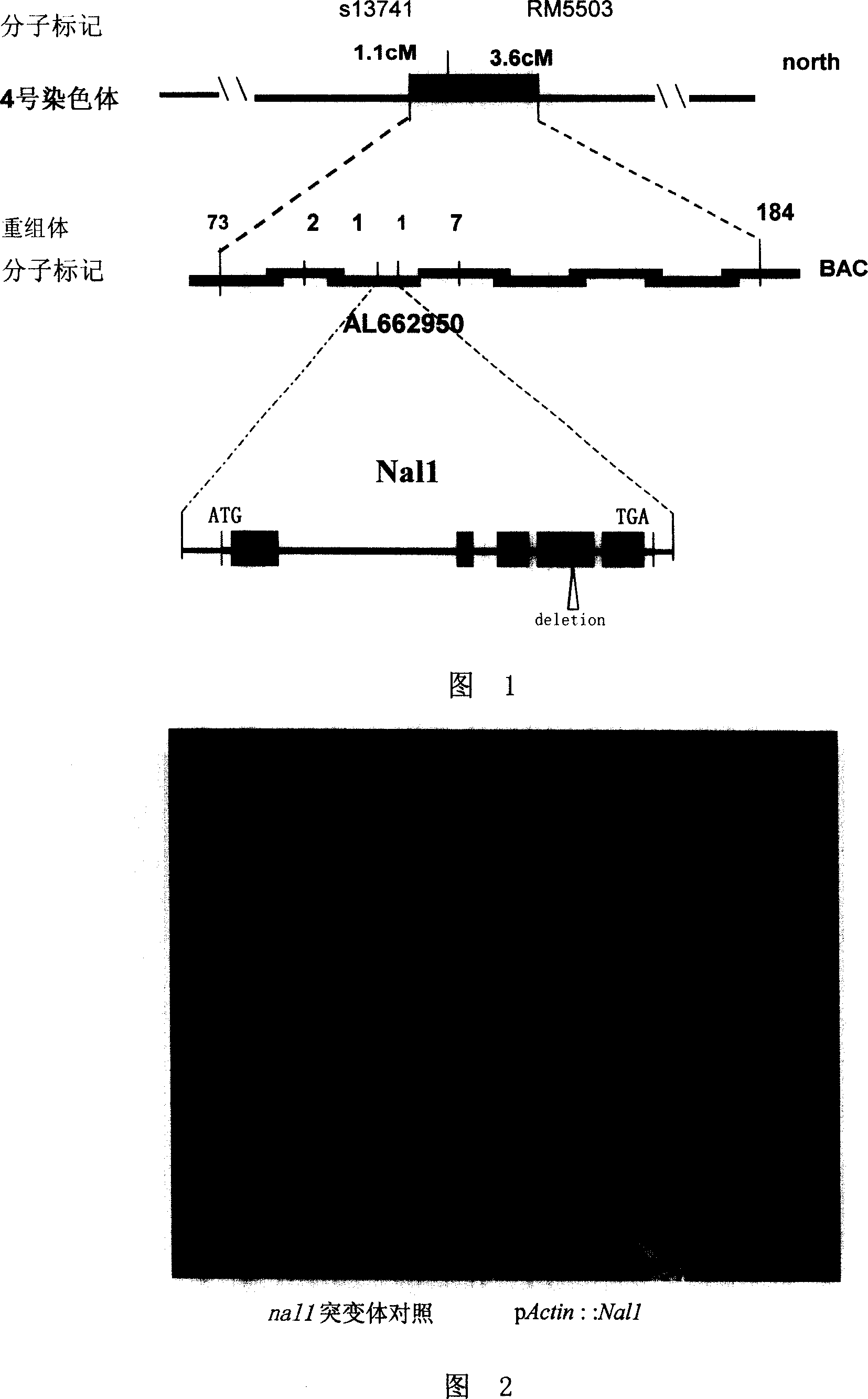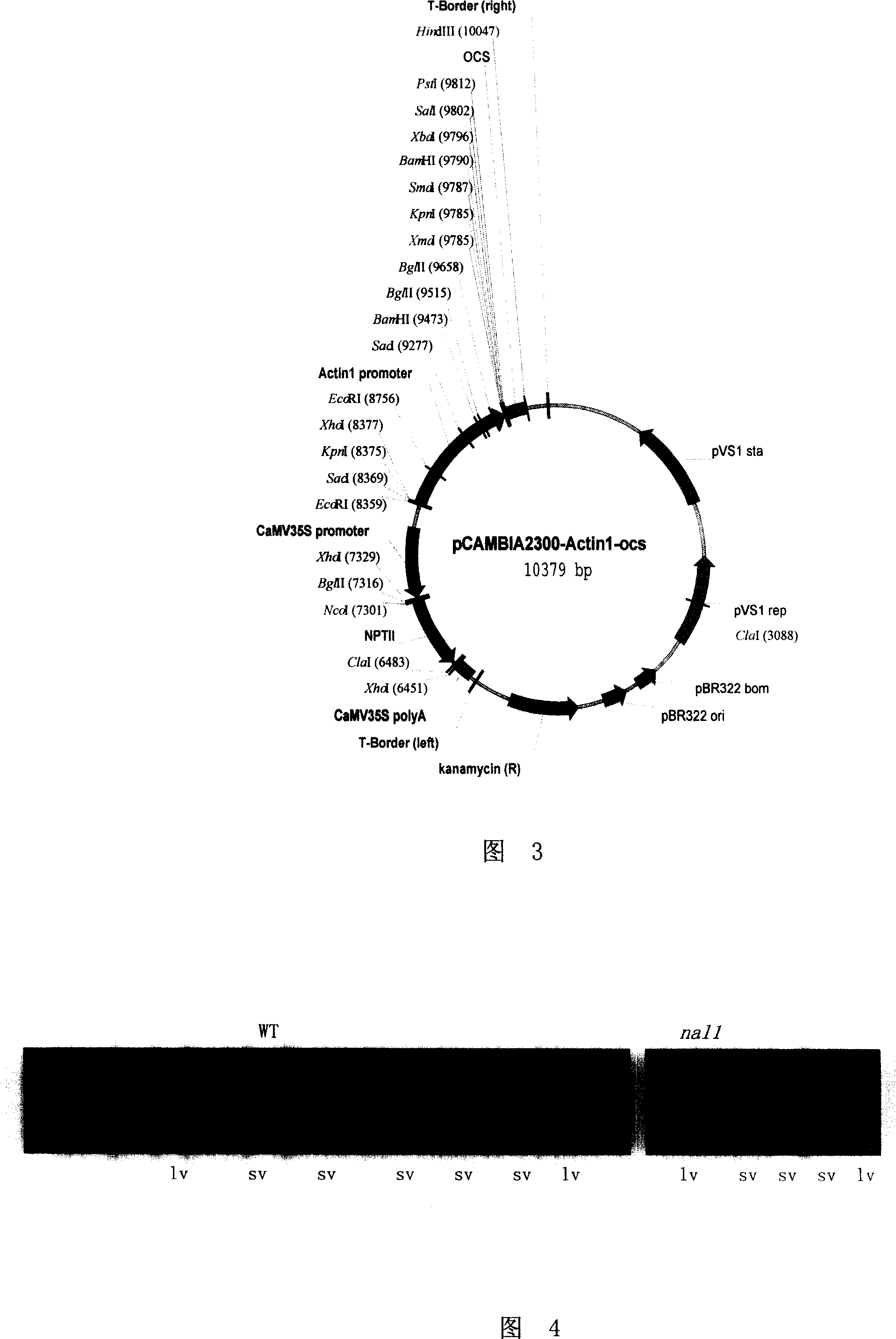Plant-related gene from paddy and its coded protein and application thereof
A gene and plant type technology, applied in the application field of improving plant type, can solve problems such as unknown function
- Summary
- Abstract
- Description
- Claims
- Application Information
AI Technical Summary
Problems solved by technology
Method used
Image
Examples
Embodiment 1
[0045] Example 1. Acquisition of the plant-type-related gene Nal1 derived from rice
[0046] 1. Obtaining rice nal1 mutants
[0047] A near-isogenic line of narrow-leaf dwarf material was obtained through about ten generations of backcrossing the early indica rice variety Zhefu 802 (Dong Fenggao, Xiong Zhenmin, Qian Qian, Zu Xudong, Chen Shihua (1994). Breeding Near- isogenic lines of morphological markers in indica rice. ChineseJ.Rice Sci.8, 135-139. The mutant can be purchased from the China Rice Research Institute), and the mutant material is named nal1 (narrow leaf 1), which is similar to the normal plant The most prominent phenotypes of nal1 were that the height of the main panicle (52±3.5cm) was significantly shorter than that of the normal plant (74±3.5cm), the leaves were narrower and darker, and the number of spikes per plant (22.5±1.8) was shorter than that of the normal plant (11.7±2.4) significantly increased.
[0048] 2. The plant type-related gene Nal1 from the...
Embodiment 2
[0056] Example 2. Confocal analysis of normal wild-type plants and nal1 mutants
[0057] The leaves of the normal wild-type Zhefu 802 plants (control, WT) and the nal1 mutant and the significantly shortened fourth internode were selected for con-electrofocus analysis, and the results were as follows: Figure 4 As shown (bar=100um), the total number of small vascular bundles (sv) in nal1 mutant leaves (blade) was significantly reduced compared with wild-type normal plants, and at the same time, two adjacent large vascular bundles (lv) in nal1 mutant leaves (blade) ), the number of small vascular bundles (sv) between nal1 mutants was also significantly reduced compared with that of wild-type normal plants, resulting in significantly narrower leaves of the nal1 mutant. The above detection results indicated that Nal1 gene may affect the width and size of leaves by regulating the formation of small vascular bundles (sv) in leaves (blade), and Nal1 gene also plays an important role ...
PUM
 Login to View More
Login to View More Abstract
Description
Claims
Application Information
 Login to View More
Login to View More - R&D
- Intellectual Property
- Life Sciences
- Materials
- Tech Scout
- Unparalleled Data Quality
- Higher Quality Content
- 60% Fewer Hallucinations
Browse by: Latest US Patents, China's latest patents, Technical Efficacy Thesaurus, Application Domain, Technology Topic, Popular Technical Reports.
© 2025 PatSnap. All rights reserved.Legal|Privacy policy|Modern Slavery Act Transparency Statement|Sitemap|About US| Contact US: help@patsnap.com


